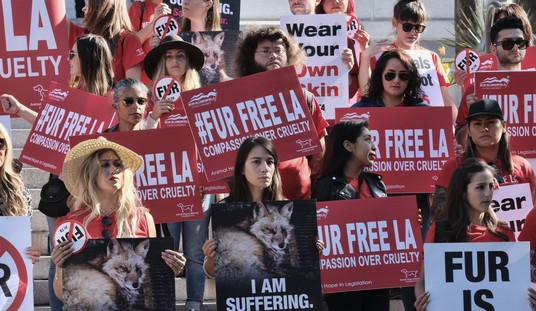Leftwing historian Rick Perlstein recently told Reason that “Bonnie and Clyde was the most important text of the New Left.” It certainly foreshadowed the radical chic that runs through the liberalism of the late 1960s, from the Black Panthers sipping Martinis in Leonard Bernstein’s salon to recurring parodies such Michelle Obama in camo and combat boots clutching an AK-47 on the cover of this week’s New Yorker.
Speaking of the New Yorker, how much did Pauline Kael’s championing of the movie impact the rest of culture? In my interview with James Lileks on AMC’s Mad Men for PJM Political, we discussed the middlebrow culture of the 1950s and early 1960s. That culture was eventually eviscerated, as anyone who turns on a TV or goes to the movies knows all too well. But how much is Pauline Kael to blame?
Her part in the process began four decades ago when she wrote an article for The New Yorker defending Bonnie and Clyde, the 1967 Warren Beatty film that treated two 1930s bank robbers with sympathy and raucous humour.
Most critics found Bonnie and Clyde empty and trashy. The crusty old New York Times guy, Bosley Crowther, then one of the most influential American critics, decided that Bonnie and Clyde failed to meet his narrow, simple-minded, painfully respectable standards. It was too violent, and he thought the love story of its doomed, hare-brained title characters was “sentimental claptrap.”
Kael, whose critical reputation was in its early stages, used Bonnie and Clyde as the opening shot in what turned out to be a war against middlebrow, middle-class, middle-of-the-road taste. Her New Yorker piece began: “How do you make a good movie in this country without being jumped on? Bonnie and Clyde is the most excitingly American American movie since The Manchurian Candidate. The audience is alive to it.”
She announced no less than a revolution in taste that she sensed in the air. Movie audiences, she said, were going beyond “good taste,” moving into a period of greater freedom and openness. Was it a violent film?
Well, Bonnie and Clyde needed violence. “Violence is its meaning.”
She hated earnest liberalism and critical snobbery. She liked the raw energy in the work of adventurous directors such as Robert Altman, Francis Ford Coppola, Steven Spielberg, George Lucas and Martin Scorsese. She trusted her visceral reactions to movies.
When hired as a regular New Yorker movie critic, she took that doctrine to an audience that proved enthusiastic and loyal. She became the great star among New Yorker critics, then the most influential figure among critics in any field. Books of her reviews, bearing titles such as I Lost it at the Movies, Kiss Kiss Bang Bang and When the Lights Go Down, sold in impressive numbers. Critics across the continent became her followers. Through the 1970s and ’80s, no one in films, except the actual moviemakers, was more often discussed.
It was only in the late stages of her New Yorker career (from which she retired in 1991) that some of her admirers began saying she had sold her point of view too effectively. A year after her death (in 2001) one formerly enthusiastic reader, Paul Schrader, a screenwriter of films such as Raging Bull and Taxi Driver, wrote: “Cultural history has not been kind to Pauline.”
Kael assumed she was safe to defend the choices of mass audiences because the old standards of taste would always be there. They were, after all, built into the culture. But those standards were swiftly eroding. Schrader argued that she and her admirers won the battle but lost the war. Acceptable taste became mass-audience taste, box-office receipts the ultimate measure of a film’s worth, sometimes the only measure. Traditional, well-written movies without violence or special effects were pushed to the margins. “It was fun watching the applecart being upset,” Schrader said, “but now where do we go for apples?”
As the above article concludes, “Not long before she died, Pauline Kael remarked to a friend, ‘When we championed trash culture we had no idea it would become the only culture.’ Who did?”
(Via Jonathan Last.)










Join the conversation as a VIP Member